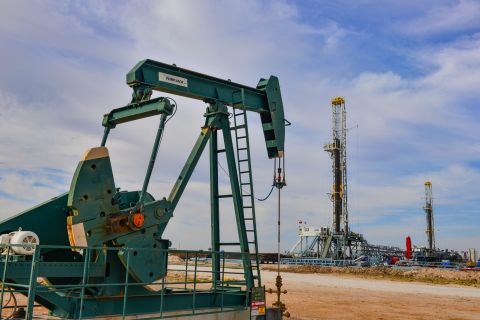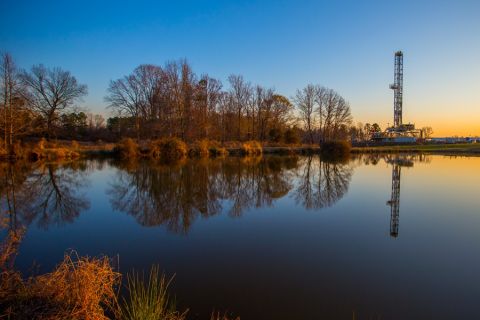Heavy oil and bitumen account for more than double the resources of conventional oil in the world. There are large resources of heavy oil and bitumen in Venezuela, Canada, Russia, the U.S. and many other countries. Such heavy hydrocarbons are immobile at reservoir conditions because of low API gravity (as low as 5°API to 10oAPI) and high viscosity. Viscosity needs to be reduced to make heavy oil and bitumen flow in porous media. Thermal in situ production technology based on steam injection is highly effective in the recovery of such heavy crude. Steam-assisted gravity drainage (SAGD), cyclic steam stimulation and steam drive are among the proven commercial production methods that allow the recovery of more than 60% of oil in place. Temperature in such production operations can reach 350 C (662 F).
Heavy oil and bitumen deposits are typically associated with geologically young, shallow formations represented by unconsolidated sand. Sand control is crucial in any thermal project. Effective sand control design allows economic production rates without plugging of liners or excessive sand production.

Images of better quality oil sand (left) and poorer quality oil sand (right) are shown. (Source: Ray Strom, Calgary Rock and Materials)
Sand production is one of the oldest problems in the oil industry. Different sand control methods, both active (slotted liners, wire wrapped screens, etc.) and passive (oriented perforation, controlled drawdown, etc.) are known. Such factors as high temperature and pressure, acid gas generation, corrosion effects, scale, and thermal formation damage are to be taken into account when decisions about thermal completions are made. At the same time, the industry is facing many challenges such as low oil prices, tight environmental regulations, the need to lower risks while assuring well integrity and longevity, and project economics. All of those require special technical solutions for thermal well design, in particular sand control.
Sand control factors
The design and effectiveness of sand control strongly depend on the reservoir type and production technology. As the best-quality heavy oil and bitumen deposits become depleted, the industry moves toward development of the lower quality, challenging reservoirs.
Technology suitable for better quality reservoirs does not necessarily work for lower quality deposits. In general, sand control requirements are: 1) to allow economic production rates without plugging or excessive sand production; 2) design based on the upper tolerance level for volume and size of allowable production of fines, and 3) required mechanical strength of the sand control device for insertion and maintaining integrity over the life of the well.
The cost of a failed liner includes lost production, workover operations, sand handling costs, pump replacements, re-drills, etc., and can range from 10% to 200% of the cost of a thermal well.
The key factor and the starting point in sand control design is reservoir characterization. Particle size distribution, especially fines content (particles with less than 44-μ diameter), shape of sand grains (roundness and sphericity) and mineralogy are important. Knowing formation water composition, reservoir wettability and oil characteristics also is helpful. Certain “rules of thumb” for sand control design for thermal production operations and industry knowledge exist, and they need to be taken into account for a new product.
The second important factor that affects liner performance is operational practices (well startup, production rates, workover operations, etc.)—this is still something of a gray area, and more knowledge sharing in the industry is needed.
Sand control technology
Different sand control devices have been used in thermal production operations—slotted liners, wirewrapped screens and premium screens—both as gravel packs and standalone applications. Because of the need to reduce cost and longer horizontal wells (up to 1,700 m [5,577 ft]), standalone applications are common. Straight-cut slotted liners are used in SAGD steam injector wells. Rolled top (keystone) slotted liners provide acceptable performance in SAGD producers, but such projects are associated with the best-quality reservoirs (95% and higher quartz and 5% or less fines). In general, the industry is moving toward using screens in both injectors and producers. This also is related to the fact that more “reactive” deposits prone to thermal formation damage are to be developed.

Examples are shown of sand control devices used in thermal production operations: A) wire wrapped screen, B) precision punch screen and C) premium screen. (Source: Delta Screens)
Thus, the trend in SAGD is to use wirewrapped screens in producers as wire-wrapped screens perform well for both good-quality and poor-quality sands. Another option is to use precision punched screens for good sands or use premium screens for poor-quality sands. Both laboratory test data and field data show that screens have a better performance than slotted liners in terms of plugging and provide lower differential pressure. Screens, in particular wire-wrapped screens, have a larger open flow area than slotted liners and are less prone to corrosion. It also has been shown that wire-wrapped screens can manage both finer and coarser sand in a reservoir and in general provide longer well life.
Experience shows that depth filters often are plugged by scale (inorganic and organic scale) and fines should be produced but not stopped. Slot tolerance and quality of the screens become more important since the open flow area is to be maximized in thermal completions, but only fines need to be produced. The manufacturing process of wire-wrapped screens allows high slot tolerance, which makes them highly suitable for poorer quality reservoirs.
The accuracy of precision punched screen slots is lower but makes them more suitable for better quality deposits. Wrap-on pipe screens instead of slip-on jackets provide higher mechanical integrity of wells and are the better option in thermal completions. Another trend is the use of flow control devices, which are to be used with screens. Flow control devices can be used for both injectors and producers, can be both liner-deployed and tubing-deployed, provide better conformance and prevent steam breakthrough.
Effective sand control design for thermal production operations requires a multidisciplinary approach and is an integral part of the well longevity and economics of a project. Better understanding of the effect of reservoir quality, thermal formation damage and operational practices on well performance is the key for the success of a thermal project.
Recommended Reading
EIA: Permian, Bakken Associated Gas Growth Pressures NatGas Producers
2024-04-18 - Near-record associated gas volumes from U.S. oil basins continue to put pressure on dry gas producers, which are curtailing output and cutting rigs.
‘Monster’ Gas: Aethon’s 16,000-foot Dive in Haynesville West
2024-04-09 - Aethon Energy’s COO described challenges in the far western Haynesville stepout, while other operators opened their books on the latest in the legacy Haynesville at Hart Energy’s DUG GAS+ Conference and Expo in Shreveport, Louisiana.
Mighty Midland Still Beckons Dealmakers
2024-04-05 - The Midland Basin is the center of U.S. oil drilling activity. But only those with the biggest balance sheets can afford to buy in the basin's core, following a historic consolidation trend.
Mesa III Reloads in Haynesville with Mineral, Royalty Acquisition
2024-04-03 - After Mesa II sold its Haynesville Shale portfolio to Franco-Nevada for $125 million late last year, Mesa Royalties III is jumping back into Louisiana and East Texas, as well as the Permian Basin.




